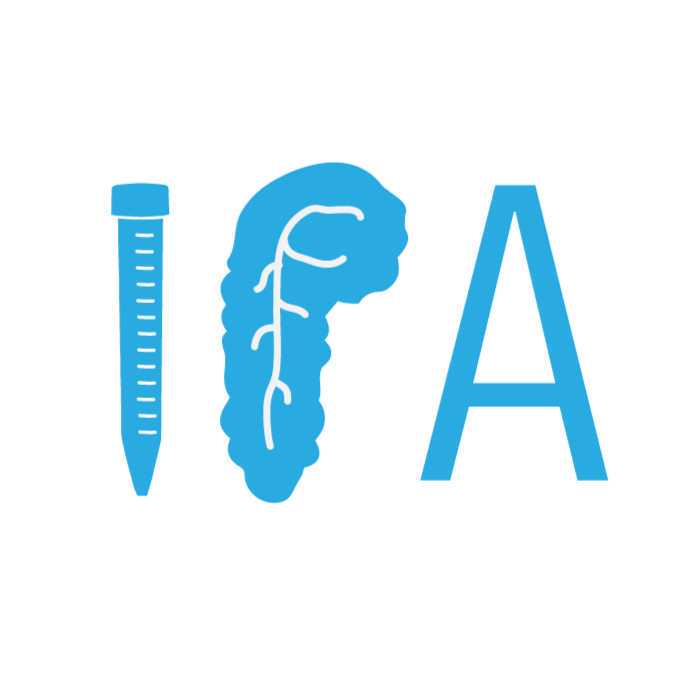Dec 02, 2021
Version 1
Immunofluorescent Staining of Mouse Pancreas for Islet Cell Mass Analysis V.1
- 1Vanderbilt Diabetes Research Center
- Vanderbilt Diabetes Research Center

Protocol Citation: Islet and Pancreas Analysis Core 2021. Immunofluorescent Staining of Mouse Pancreas for Islet Cell Mass Analysis. protocols.io https://dx.doi.org/10.17504/protocols.io.bzvwp67e
License: This is an open access protocol distributed under the terms of the Creative Commons Attribution License, which permits unrestricted use, distribution, and reproduction in any medium, provided the original author and source are credited
Protocol status: Working
We use this protocol and it’s working
Created: November 08, 2021
Last Modified: December 02, 2021
Protocol Integer ID: 54934
Abstract
This SOP defines the assay method used by the Vanderbilt Diabetes Center Islet and Pancreas Analysis (IPA) Core for quantitative determination of the islet cell composition and islet cell mass of mouse pancreas by immunofluorescent staining.
Materials
General reagents:
1X Phosphate buffered saline without Ca/Mg Thermo Fisher ScientificCatalog #Invitrogen 14190-144
BSA (bovine serum albumin)Sigma AldrichCatalog #A-6003
SlowFade Gold (Molecular Probes)Thermo Fisher ScientificCatalog #S36938
Triton X-100 Bio-rad LaboratoriesCatalog #1610407
Normal Donkey SerumJackson ImmunoresearchCatalog #017-000-121
4,6-Diamidino-2-Phenylindole, Dihydrochloride (DAPI)Thermo Fisher ScientificCatalog #D1306
Super HT PAP PenResearch Products International (rpi)Catalog #195506
10 mL BD Luer-Lok SyringeBD BiosciencesCatalog #302995
Millex-GP Syringe Filter Unit, 0.22 µmEmd MilliporeCatalog #SLGP033RS
Antibodies:
Insulin antibody (guinea pig polyclonal)FitzgeraldCatalog #20-IP30
Glucagon antibody (rabbit polyclonal)Cell Signaling TechnologyCatalog #2760S
Somatostatin antibody (goat polyclonal)Santa Cruz BiotechnologyCatalog #sc-7819
Cy2 AffiniPure Donkey Anti-Guinea Pig IgG (H L)Jackson ImmunoresearchCatalog #706-225-148
Cy3 AffiniPure Donkey Anti-Rabbit IgG (H L)Jackson ImmunoresearchCatalog #711-165-152
Cy5 AffiniPure Donkey Anti-Goat IgG (H L)Jackson ImmunoresearchCatalog #705-175-147
Equipment:
Equipment
Staining chambers
NAME
Kartell
BRAND
25460-907
SKU
Data acquisition and analysis:
Equipment
Aperio slide scanner
NAME
Leica
BRAND
Scanscope FL
SKU
Software
HALO® Image Analysis Platform
NAME
Indica Labs
DEVELOPER
Reagent preparation
Reagent preparation
10% Triton X-100 stock (30 mL) – Combine 3 mL Triton-X-100 and 27 mL 1X PBS. Mix on shaker for 00:30:00 or until Triton X-100 is completely dissolved. Store at 4 °C for up to 1 month.
Permeabilization solution (0.2% Triton, 50 mL) – Combine 1 mL 10% Triton stock and 49 mL 1X PBS.
Blocking buffer (5% Normal Donkey Serum, 4 mL) – Combine 0.2 mL NDS and 3.8 mL 1X PBS.
Antibody buffer (10 mL) – Combine 0.1 g BSA, 0.1 mL 10% Triton stock, and 9.8 mL 1X PBS. Filter solution through a 0.22 μm syringe filter and store at 4 °C .
DAPI staining solution (1:25,000, 50 mL) – Combine 2 µl DAPI stock (5mg/mL) and 50 mL 1X PBS. Keep protected from light or prepare right before step 17.
Wash buffer (150 mL) - Combine 148.5 mL 1X PBS and 1.5 mL 10% Triton X-100 stock.
Immunofluorescent staining
Immunofluorescent staining
Gather reagents for immunostaining, noting that steps 9-11, 15, and 17-18 can be performed in Kartell staining chambers (each holds ~50 mL).
Note
Always use freshly-made antibody and wash buffers (steps 4, 6); other reagents can be prepared ahead of time and stored at 4 °C .
Let the frozen cryosections thaw at room temperature and air-dry for about 00:30:00 .
To remove OCT, wash slides 3 times in 1X PBS for 00:05:00 , decanting or switching to a new chamber after each wash.
Permeabilize the tissue section with permeabilization solution for 00:15:00 at room temperature.
Wash the sections 3 times in 1X PBS for 00:05:00 , decanting or switching to a new chamber after each wash.
Draw rectangles around the sections with PAP pen and let them dry for about 00:05:00 .
Block the sections with blocking buffer at room temperature for 01:30:00 in a humidified chamber. Use a sufficient volume (approximately 200-300 µl) to ensure each section is entirely covered with buffer.
Aspirate the blocking buffer, add primary antibodies diluted in antibody buffer (see Table 1), and incubate in a humidified chamber Overnight at 4 °C . Use a sufficient volume (approximately 200-300 µl) to ensure each section is entirely covered with antibody solution.
Table 1: Detailed information for primary and secondary antibodies.
Aspirate the primary antibody solution and wash the sections 3 times in wash buffer for 00:10:00 , decanting or switching to a new chamber after each wash.
Add secondary antibodies diluted in antibody buffer (see Table 1) and incubate for 01:30:00 at room temperature in a humidified chamber. Use a sufficient volume (approximately 200-300 µl) to ensure each section is entirely covered with antibody solution.
Aspirate the secondary antibody solution and incubate slides in DAPI solution to counterstain for 00:10:00 at room temperature.
Wash slides 3 times in 1x PBS for 00:15:00 , decanting or switching to a new chamber after each wash.
Add a sufficient volume of SlowFade Gold mounting medium (approximately 5-10 µl) to each tissue section, ensuring tissue section will be entirely covered after medium spreads. Carefully mount coverslips, making sure to avoid creating air bubbles between the tissue and coverslip.
Blot away any excess mounting medium from slide edges and seal the coverslipped slides with nail polish on all edges. Allow slides to dry completely before imaging.
Imaging and analysis
Imaging and analysis
Acquire images of stained pancreas sections using a high-resolution whole slide scanning system (Aperio ScanScope FL, Leica Biosystems). An example field of view is shown below in Figure 1.
Apply a tissue classifier algorithm (HALO® image analysis platform, Indica Labs) to quantify cross-sectional area of islet alpha (glucagon+), beta (insulin+), and delta (somatostatin+) cells. An example markup image is shown in Figure 2.
Figure 1 (above left). Fluorescent imaging of mouse pancreatic tissue.
Figure 2 (above right). Analysis of mouse pancreatic islets using a tissue classifier algorithm.
Note
To quantify islet cell mass for a given mouse, stain and analyze at least 5 cryosections spaced approximately 200 μm apart.
Each islet cell type is reported as a percentage of total alpha, beta, and delta cell area. Islet cell mass is calculated by multiplying alpha, beta, and/or delta cell area by pancreas weight.
